75kVA Transformer Specifications: Voltage, Phase, Cooling & Protection Options?
Are you struggling to understand the technical specifications of 75kVA transformers? You’re not alone. Many engineers and project managers find themselves overwhelmed by the array of options available. Choosing the wrong specifications can lead to inefficiency, increased costs, or even system failures.
75kVA transformers come with various specifications including voltage options (e.g., 480V/208Y-120V), single or three-phase configurations, cooling types (dry-type or oil-immersed), protection devices, and housing options. The choice depends on specific application needs, environmental factors, and compliance requirements with standards like IEC, ANSI, or IEEE.
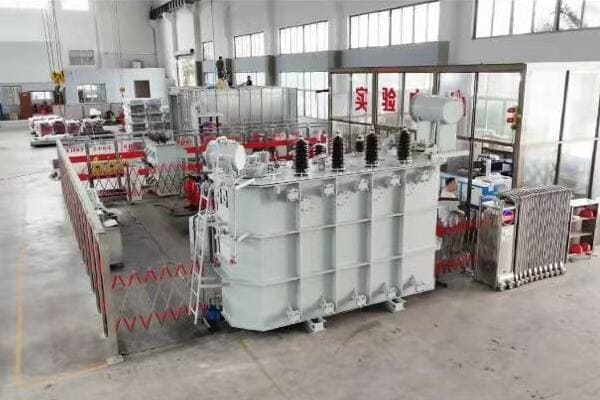
In this article, I’ll guide you through the key specifications of 75kVA transformers. We’ll explore voltage configurations, phase options, cooling types, protection devices, housing choices, and compliance standards. Whether you’re a seasoned engineer or new to the field, this comprehensive guide will help you make informed decisions about 75kVA transformer specifications.
Voltage Options: Primary and Secondary Common Configurations?
Are you confused about which voltage configuration to choose for your 75kVA transformer? The right voltage selection is crucial for your system’s efficiency and compatibility. But how do you navigate the various primary and secondary voltage options available?
Common primary voltage options for 75kVA transformers include 480V, 4160V, and 13800V, while secondary voltages often include 208Y/120V and 480Y/277V. The choice depends on your power source and load requirements. Proper selection ensures efficient power distribution and compatibility with connected equipment.
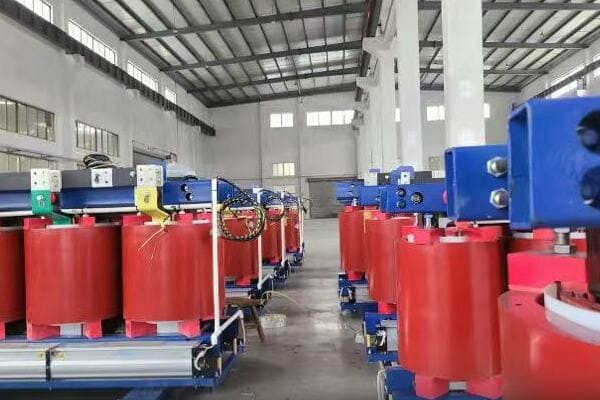
Understanding Voltage Configurations for 75kVA Transformers
Let’s break down the common voltage options and their applications:
1. Primary Voltage Options
Common primary voltages include:
- 480V: Typical for commercial and light industrial applications
- 4160V: Often used in larger industrial settings
- 13800V: Common for utility distribution systems
I once worked on a project where the client initially specified a 480V primary for their 75kVA transformer. After analyzing their power source, we realized that a 4160V primary was more suitable, leading to a more efficient overall system design.
2. Secondary Voltage Options
Popular secondary voltage configurations:
- 208Y/120V: Common in commercial buildings for lighting and receptacles
- 480Y/277V: Used in industrial settings and for larger commercial loads
3. Voltage Transformation Ratios
Understanding transformation ratios:
- 480V to 208Y/120V: Common for step-down in commercial applications
- 4160V to 480Y/277V: Typical for industrial power distribution
4. Special Configurations
Some applications require unique voltage options:
- 240/120V: Sometimes used in residential or light commercial settings
- Custom voltages: Available for specific project requirements
Here’s a table summarizing common voltage configurations for 75kVA transformers:
| Primary Voltage | Secondary Voltage | Typical Application |
|---|---|---|
| 480V | 208Y/120V | Commercial buildings |
| 4160V | 480Y/277V | Industrial facilities |
| 13800V | 480Y/277V | Utility distribution |
| 480V | 240/120V | Light commercial/Residential |
In my experience, one of the most critical factors in choosing voltage configurations is understanding the existing infrastructure. I recall a project for a small manufacturing plant where we initially considered a 480V primary. However, after surveying the site, we discovered that the available power was 4160V. This led us to redesign the transformer specifications, ultimately resulting in a more cost-effective solution that avoided the need for an additional step-down transformer.
Another important consideration is future expansion plans. In a recent commercial building project, although the current needs could be met with a 208Y/120V secondary, we opted for a 480Y/277V configuration. This decision was based on the client’s plans for future heavy equipment installation, ensuring the transformer would remain suitable for years to come.
The impact of voltage selection on system efficiency should not be underestimated. In an energy-conscious industrial project, we conducted a detailed analysis of voltage options. By choosing a higher primary voltage (4160V instead of 480V), we were able to reduce line losses significantly, leading to substantial energy savings over the system’s lifetime.
Harmonic considerations can also influence voltage selection. In a data center project, the high harmonic content of the load led us to specify a transformer with a 480V primary and a 208Y/120V secondary, along with appropriate K-factor rating. This configuration allowed for better management of harmonic currents and reduced the risk of overheating.
Voltage regulation is another crucial factor. In a project with sensitive electronic equipment, we had to carefully consider the voltage regulation characteristics of different configurations. We ultimately chose a configuration that provided tighter voltage regulation to ensure stable power supply to the sensitive loads.
Lastly, the trend towards renewable energy integration is influencing voltage configuration choices. In a recent project involving solar panel integration, we had to select a transformer configuration that could handle bi-directional power flow. This required careful consideration of both primary and secondary voltages to ensure compatibility with both the grid and the solar inverter systems.
Choosing the right voltage configuration for a 75kVA transformer involves balancing current needs, future requirements, efficiency considerations, and compatibility with both power sources and loads. By carefully analyzing these factors, you can ensure that your transformer is optimally configured for your specific application.
Single Phase vs Three Phase: What’s Better for 75kVA?
Are you debating whether to choose a single-phase or three-phase configuration for your 75kVA transformer? This decision can significantly impact your power distribution system’s efficiency and compatibility. But how do you determine which option is best for your specific needs?
For 75kVA transformers, three-phase configurations are generally preferred due to their higher efficiency and suitability for larger loads. However, single-phase options may be appropriate for specific residential or light commercial applications. The choice depends on the power source, load requirements, and overall system design.
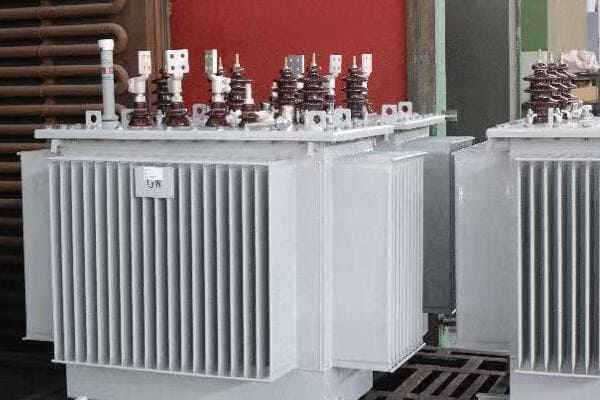
Comparing Single-Phase and Three-Phase 75kVA Transformers
Let’s explore the key differences and applications of single-phase and three-phase configurations:
1. Single-Phase Configurations
Characteristics of single-phase transformers:
- Simpler design and often lower cost
- Suitable for residential and some light commercial applications
- Limited in handling large motor loads
I once worked on a project for a small rural business where we opted for a single-phase 75kVA transformer. The decision was based on the available power supply and the predominantly lighting and small appliance loads.
2. Three-Phase Configurations
Advantages of three-phase transformers:
- Higher efficiency, especially for motor loads
- Better suited for industrial and larger commercial applications
- More balanced power distribution
3. Load Considerations
How load types influence the choice:
- Single-phase: Ideal for lighting, HVAC, and general-purpose outlets
- Three-phase: Preferred for large motors, industrial equipment, and balanced loads
4. Power Source Compatibility
Matching the transformer to the available power:
- Single-phase often used where only single-phase power is available
- Three-phase typically used in areas with three-phase utility supply
Here’s a comparison table of single-phase vs three-phase 75kVA transformers:
| Factor | Single-Phase | Three-Phase |
|---|---|---|
| Efficiency | Lower | Higher |
| Typical Applications | Residential, Small Commercial | Commercial, Industrial |
| Load Handling | Limited motor loads | Excellent for motors |
| Size and Weight | Generally larger and heavier | More compact |
| Cost | Often lower initial cost | More cost-effective for large loads |
In my experience, the decision between single-phase and three-phase often comes down to more than just load calculations. I recall a project for a small manufacturing facility where the initial assessment suggested a single-phase 75kVA transformer would be sufficient. However, after discussing future expansion plans, including the addition of three-phase machinery, we opted for a three-phase configuration. This foresight saved the client from a costly upgrade just a year later.
The impact of phase configuration on voltage stability is another crucial consideration. In a project involving sensitive electronic equipment, we found that a three-phase system provided better voltage stability under varying load conditions compared to a single-phase alternative. This improved stability was critical for the reliable operation of the client’s precision instruments.
Harmonic management is often easier with three-phase systems. In a data center project, where harmonic currents were a significant concern, the three-phase configuration allowed for better cancellation of triplen harmonics, reducing the overall harmonic distortion in the system.
Energy efficiency regulations are increasingly influencing transformer choices. In a recent commercial building project, energy codes required a minimum efficiency that was more easily met with a three-phase configuration. The three-phase 75kVA transformer not only met the efficiency requirements but also provided better overall performance.
The growing trend of electric vehicle (EV) charging stations is also affecting phase configuration choices. In a recent multi-unit residential project, we opted for a three-phase 75kVA transformer to accommodate future EV charging needs. The three-phase configuration provided more flexibility for load balancing as EV chargers are added over time.
Maintenance considerations can also play a role in the decision. Generally, three-phase systems offer easier load balancing and can simplify maintenance procedures. In an industrial setting, this can translate to reduced downtime and lower long-term maintenance costs.
Lastly, the integration of renewable energy sources, such as solar panels, often favors three-phase configurations. In a recent project involving rooftop solar, the three-phase 75kVA transformer provided better compatibility with the three-phase inverters used in larger solar installations, allowing for more efficient integration of renewable energy.
Choosing between single-phase and three-phase configurations for a 75kVA transformer requires careful consideration of current needs, future expansion plans, load types, power quality requirements, and overall system efficiency. While three-phase configurations are often preferred for their versatility and efficiency, single-phase options remain viable for specific applications. The key is to analyze your specific requirements thoroughly to make the most appropriate choice for your power distribution system.
Cooling Types: Dry Type (Cast Resin) vs Oil Immersed?
Are you unsure whether to choose a dry type or oil-immersed cooling system for your 75kVA transformer? This decision can significantly impact your transformer’s performance, maintenance requirements, and safety considerations. But how do you determine which cooling type is best suited for your application?
For 75kVA transformers, both dry type (cast resin) and oil-immersed cooling systems are viable options. Dry type transformers are preferred for indoor installations and environments with strict fire safety requirements. Oil-immersed transformers offer better cooling efficiency and are often more cost-effective for outdoor applications. The choice depends on installation location, environmental factors, and maintenance considerations.
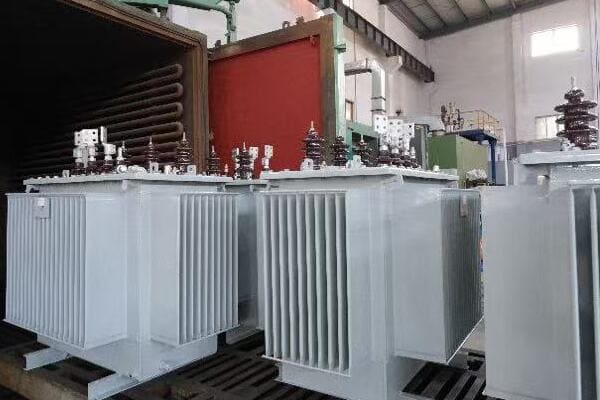
Comparing Dry Type and Oil-Immersed Cooling for 75kVA Transformers
Let’s explore the characteristics and applications of both cooling types:
1. Dry Type (Cast Resin) Transformers
Advantages of dry type transformers:
- Fire-resistant and environmentally friendly
- Suitable for indoor installations, especially in buildings
- Lower maintenance requirements
I once worked on a project for a hospital where we chose a dry type 75kVA transformer. The decision was primarily driven by the strict fire safety regulations and the need to install the transformer close to the point of use within the building.
2. Oil-Immersed Transformers
Benefits of oil-immersed transformers:
- Excellent cooling efficiency
- Generally more cost-effective for outdoor installations
- Better overload capacity
3. Environmental Considerations
How environment affects cooling choice:
- Dry type: Preferred in environmentally sensitive areas
- Oil-immersed: Requires containment measures in some locations
4. Maintenance Requirements
Differences in maintenance needs:
- Dry type: Minimal maintenance, no oil testing required
- Oil-immersed: Periodic oil testing and potential oil replacement
Here’s a comparison table of dry type vs oil-immersed 75kVA transformers:
| Factor | Dry Type (Cast Resin) | Oil-Immersed |
|---|---|---|
| Fire Safety | High | Moderate (with safeguards) |
| Cooling Efficiency | Good | Excellent |
| Environmental Risk | Low | Higher (potential oil leaks) |
| Maintenance | Low | Moderate |
| Overload Capacity | Limited | Better |
| Typical Installation | Indoor | Outdoor |
In my experience, the choice between dry type and oil-immersed cooling often involves more than just technical specifications. I recall a project for a data center where the initial plan was to use an oil-immersed transformer for its superior cooling efficiency. However, after considering the potential risk of oil leaks in a sensitive electronic environment, we opted for a dry type transformer. This decision, while slightly more expensive initially, provided peace of mind and aligned better with the client’s risk management policies.
The impact of ambient temperature on cooling performance is a crucial consideration. In a project located in an extremely hot climate, we found that the oil-immersed transformer performed better in maintaining acceptable operating temperatures compared to a dry type alternative. The superior heat dissipation properties of the oil allowed for more stable operation in the challenging environment.
Noise considerations can also play a role in the decision. In an urban project where the transformer was to be installed near occupied spaces, we chose a dry type transformer due to its generally lower noise levels. This decision helped in meeting local noise regulations and improving the comfort of nearby building occupants.
The ease of installation and relocation is another factor to consider. For a temporary power installation at a construction site, we opted for a dry type transformer. Its lighter weight and the absence of oil made it easier to transport and relocate as the construction progressed.
Altitude can affect the cooling performance of transformers. In a high-altitude installation, we had to carefully evaluate the cooling options. The reduced air density at high altitudes can impact the cooling efficiency of dry type transformers more significantly than oil-immersed units. In this case, we chose an oil-immersed transformer with enhanced cooling features to ensure reliable operation.
The growing focus on energy efficiency is influencing cooling type decisions. In a recent green building project, we conducted a lifecycle analysis of both options. While the dry type transformer had a slight edge in terms of energy efficiency, the longer lifespan and better overload capacity of the oil-immersed unit made it more sustainable in the long run.
Lastly, the potential for future load growth should be considered. In a commercial development project, we chose an oil-immersed transformer despite its indoor location. This decision was based on the transformer’s better overload capacity, which provided more flexibility for future expansion without immediate replacement.
Choosing between dry type and oil-immersed cooling for a 75kVA transformer requires balancing factors such as installation environment, safety requirements, maintenance capabilities, and long-term operational needs. While dry type transformers offer advantages in terms of safety and environmental friendliness, oil-immersed units provide superior cooling efficiency and often better long-term value. The key is to carefully assess your specific application requirements and operational context to make the most appropriate choice.
Protection Devices: Surge Arresters, Fuses, Relays?
Are you concerned about protecting your 75kVA transformer from electrical faults and surges? Choosing the right protection devices is crucial for ensuring the longevity and reliability of your transformer. But with so many options available, how do you know which protection devices are essential for your specific application?
Protection devices for 75kVA transformers typically include surge arresters to guard against voltage spikes, fuses or circuit breakers for overcurrent protection, and protective relays for more complex monitoring and control. The choice and combination of these devices depend on the transformer’s application, installation environment, and the level of protection required.
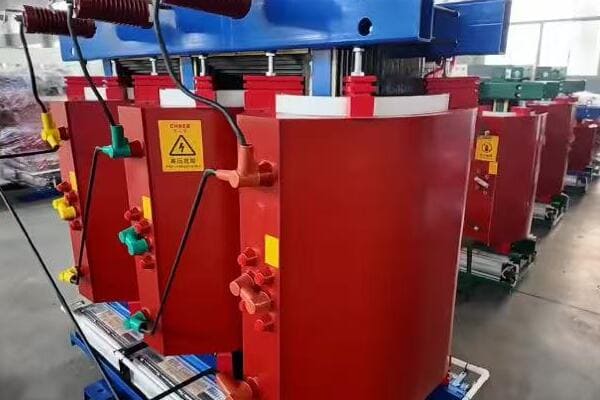
Exploring Protection Devices for 75kVA Transformers
Let’s delve into the key protection devices and their applications:
1. Surge Arresters
Role and importance of surge arresters:
- Protect against voltage spikes and lightning strikes
- Divert excess voltage to ground
- Essential for both indoor and outdoor installations
I once worked on a project where a 75kVA transformer in a coastal area was frequently exposed to lightning strikes. Installing high-quality surge arresters significantly reduced downtime and prevented costly damage to the transformer.
2. Fuses and Circuit Breakers
Overcurrent protection options:
- Fuses: Simple, cost-effective for smaller transformers
- Circuit breakers: Offer resettability and better coordination
- Both protect against overloads and short circuits
3. Protective Relays
Advanced protection and monitoring:
- Offer more sophisticated protection features
- Can monitor temperature, oil level, and other parameters
- Ideal for critical applications or larger systems
4. Temperature Monitoring Devices
Importance of temperature control:
- Winding temperature indicators
- Top oil temperature sensors
- Prevent overheating and extend transformer life
Here’s a comparison table of common protection devices for 75kVA transformers:
| Device | Function | Advantages | Typical Application |
|---|---|---|---|
| Surge Arresters | Voltage spike protection | Prevents insulation breakdown | All installations |
| Fuses | Overcurrent protection | Simple, cost-effective | Smaller systems |
| Circuit Breakers | Overcurrent protection | Resettable, better coordination | Larger or critical systems |
| Protective Relays | Comprehensive protection | Advanced monitoring capabilities | Complex or high-reliability needs |
| Temperature Monitors | Overheating prevention | Extends transformer life | All installations |
In my experience, the selection of protection devices often requires a balanced approach. I recall a project for a small industrial facility where we initially considered only basic fuse protection for their 75kVA transformer. However, after assessing the critical nature of their operations and the potential cost of downtime, we opted for a more comprehensive protection scheme including surge arresters and a basic protective relay. This decision proved invaluable when a severe thunderstorm hit the area, and our protection system prevented any damage to the transformer.
The importance of proper coordination between protection devices cannot be overstated. In a recent commercial building project, we carefully coordinated the ratings of the primary fuses with the secondary circuit breakers. This ensured that faults on the secondary side would be cleared by the nearest protective device, minimizing the impact on other parts of the system.
Environmental factors play a significant role in protection device selection. For a 75kVA transformer installed in a highly polluted industrial area, we chose surge arresters with enhanced pollution resistance. This decision was based on the increased risk of flashovers due to pollution build-up on insulators.
The growing trend of integrating renewable energy sources has introduced new challenges in transformer protection. In a project involving rooftop solar panels, we had to carefully select protection devices that could handle bi-directional power flow. This included specialized relays capable of detecting reverse power conditions.
Maintenance considerations are also crucial when selecting protection devices. For a remote installation where regular maintenance visits were challenging, we opted for self-monitoring surge arresters and circuit breakers with remote monitoring capabilities. This allowed for proactive maintenance and reduced the need for frequent on-site inspections.
The impact of harmonics on protection device performance is an often-overlooked aspect. In a data center project where harmonic loads were significant, we had to carefully select fuses and circuit breakers rated for harmonic-rich environments. Standard devices might have nuisance tripped or failed to provide adequate protection under these conditions.
Cost-benefit analysis is crucial in protection device selection. While it might be tempting to opt for the most advanced protection scheme, it’s important to balance the level of protection with the value and criticality of the transformer. For a 75kVA transformer in a non-critical application, we found that a combination of good quality surge arresters and properly sized fuses provided adequate protection without excessive cost.
Lastly, the potential for future expansion should be considered when selecting protection devices. In a growing commercial complex, we chose a protection scheme that could accommodate potential increases in transformer capacity. This included oversizing the surge arresters and selecting a modular relay system that could be easily upgraded.
Selecting the right combination of protection devices for a 75kVA transformer requires careful consideration of the application, environment, maintenance capabilities, and future needs. While surge arresters and basic overcurrent protection are essential for almost all installations, the addition of more advanced protective relays and monitoring devices can provide enhanced reliability and longevity in critical or complex applications. The key is to assess your specific needs and risks to create a protection scheme that offers the right balance of security, functionality, and cost-effectiveness.
Housing Options: Pad-Mounted, Pole-Mounted, Enclosed?
Are you unsure about which housing option is best for your 75kVA transformer? The choice of housing can significantly impact installation ease, maintenance access, and overall system reliability. But how do you determine whether a pad-mounted, pole-mounted, or enclosed design is most suitable for your specific needs?
Housing options for 75kVA transformers include pad-mounted designs for ground-level installation, pole-mounted configurations for overhead systems, and enclosed units for indoor or sensitive environments. The choice depends on factors such as available space, environmental conditions, accessibility requirements, and aesthetic considerations.
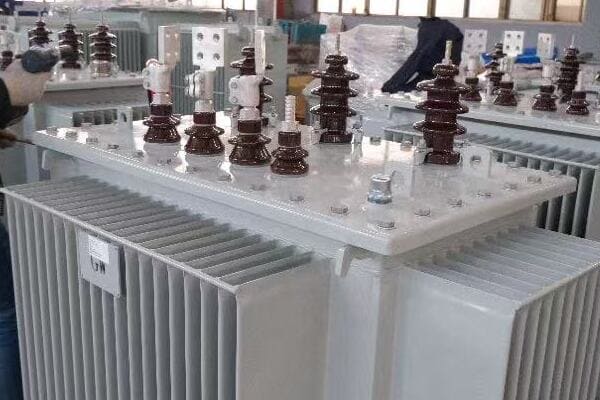
Exploring Housing Options for 75kVA Transformers
Let’s examine the characteristics and applications of different housing options:
1. Pad-Mounted Transformers
Features and benefits of pad-mounted designs:
- Ground-level installation, often used in urban areas
- Aesthetically pleasing, can be landscaped around
- Good accessibility for maintenance
I once worked on a project for a new residential development where we chose pad-mounted 75kVA transformers. This decision was driven by the developer’s desire for a clean, uncluttered streetscape and the need for easy maintenance access.
2. Pole-Mounted Transformers
Advantages of pole-mounted configurations:
- Ideal for overhead distribution systems
- Saves ground space
- Often more economical in rural areas
3. Enclosed Transformers
Benefits of enclosed designs:
- Suitable for indoor installations or harsh environments
- Provides additional protection against elements
- Can be customized for specific space constraints
4. Environmental Considerations
How environment affects housing choice:
- Pad-mounted: Good for flood-prone areas if elevated
- Pole-mounted: Suitable for areas with overhead lines
- Enclosed: Ideal for corrosive or high-pollution environments
Here’s a comparison table of housing options for 75kVA transformers:
| Housing Type | Typical Location | Advantages | Considerations |
|---|---|---|---|
| Pad-Mounted | Urban, Suburban | Aesthetic, Easy Access | Requires ground space |
| Pole-Mounted | Rural, Overhead systems | Space-saving, Economical | Harder to access |
| Enclosed | Indoor, Harsh environments | Protected, Customizable | Higher cost, Space requirements |
In my experience, the choice of housing often involves balancing technical requirements with aesthetic and practical considerations. I recall a project for a historic district where the local regulations prohibited visible electrical equipment. We opted for an underground vault housing for the 75kVA transformer, which preserved the area’s historic character while providing the necessary power distribution.
The impact of climate on housing selection cannot be overstated. In a coastal project prone to flooding, we chose elevated pad-mounted transformers. The design included a raised concrete pad and waterproof enclosures to protect against potential flood damage.
Maintenance accessibility is a crucial factor in housing selection. For a remote industrial site where crane access was limited, we selected a specially designed pad-mounted enclosure that allowed for easy removal of the transformer without the need for heavy lifting equipment. This design significantly reduced maintenance costs and downtime.
Security considerations can also influence housing choices. In an area with high vandalism rates, we opted for an enclosed design with enhanced security features, including tamper-resistant bolts and intrusion alarms. This decision provided peace of mind to the client and reduced the risk of service interruptions due to vandalism.
The trend towards renewable energy integration is affecting transformer housing decisions. In a recent solar farm project, we used custom pad-mounted enclosures designed to accommodate both the 75kVA transformer and associated solar inverter equipment. This integrated approach simplified installation and reduced overall footprint.
Noise considerations are increasingly important, especially in residential areas. For a project near a residential complex, we chose a pad-mounted design with enhanced sound insulation. This housing option allowed us to meet strict local noise regulations while providing the necessary power distribution.
Future expansion potential should be considered when selecting housing. In a growing commercial area, we opted for a pad-mounted design with extra space in the enclosure. This foresight allowed for easy upgrade to a larger transformer or addition of smart grid components without replacing the entire housing.
Lastly, the impact of extreme weather events on transformer housing is becoming a critical consideration. In an area prone to severe storms, we selected a reinforced pad-mounted enclosure designed to withstand high winds and flying debris. This robust housing ensured continuity of service even under challenging weather conditions.
Choosing the right housing option for a 75kVA transformer requires careful consideration of installation environment, maintenance needs, security requirements, and future expansion plans. While pad-mounted designs offer a good balance of aesthetics and accessibility, pole-mounted options can be more economical in certain settings, and enclosed designs provide superior protection in harsh environments. The key is to assess your specific site conditions and operational requirements to select a housing option that ensures reliable, efficient, and safe transformer operation.
Compliance with IEC, ANSI, or IEEE Standards?
Are you confused about which standards your 75kVA transformer should comply with? Navigating the world of IEC, ANSI, and IEEE standards can be daunting, but ensuring compliance is crucial for safety, reliability, and global compatibility. How do you determine which standards are relevant for your specific application?
75kVA transformers must comply with various standards depending on the region and application. IEC standards are widely used internationally, ANSI standards are common in North America, and IEEE provides guidelines for both. Key standards include IEC 60076, ANSI C57.12, and IEEE C57.12 series, covering aspects like design, testing, and performance requirements.
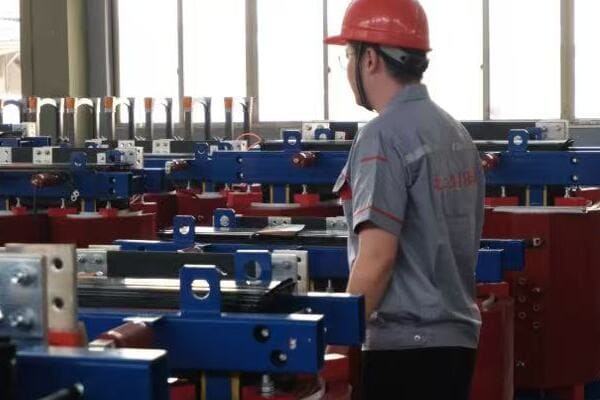
Understanding Compliance Standards for 75kVA Transformers
Let’s explore the key standards and their implications:
1. IEC Standards
International Electrotechnical Commission standards:
- IEC 60076: Power transformers – General requirements
- IEC 60085: Electrical insulation – Thermal evaluation and designation
- Widely accepted in Europe, Asia, and many other regions
I once worked on a project exporting 75kVA transformers to multiple countries. Ensuring compliance with IEC standards was crucial for meeting diverse international requirements and simplifying the certification process.
2. ANSI Standards
American National Standards Institute standards:
- ANSI C57.12.00: General requirements for liquid-immersed distribution, power, and regulating transformers
- ANSI C57.12.01: General requirements for dry-type distribution and power transformers
- Commonly used in North America
3. IEEE Standards
Institute of Electrical and Electronics Engineers guidelines:
- IEEE C57.12.00: Standard general requirements for liquid-immersed distribution, power, and regulating transformers
- IEEE C57.12.01: Standard general requirements for dry-type distribution and power transformers
- Often used in conjunction with ANSI standards
4. Specific Requirements
Key aspects covered by standards:
- Design and construction specifications
- Testing procedures and performance criteria
- Safety and environmental considerations
Here’s a comparison table of key standards for 75kVA transformers:
| Standard | Focus Area | Typical Application | Key Aspects |
|---|---|---|---|
| IEC 60076 | General requirements | International | Design, testing, rating |
| ANSI C57.12 | Liquid-immersed & dry-type | North America | Construction, performance |
| IEEE C57.12 | Comprehensive guidelines | Global | Design, testing, application |
In my experience, navigating compliance standards often requires a nuanced approach. I recall a project where we were designing a 75kVA transformer for a multinational company with operations in both Europe and North America. We had to carefully balance the requirements of both IEC and ANSI standards to create a transformer that could be used in multiple regions without modification.
The impact of standards on transformer design can be significant. In a recent project involving a 75kVA transformer for a renewable energy application, we had to comply with additional IEC standards specific to wind and solar power integration. This required careful consideration of factors like voltage fluctuations and harmonic distortion that are more prevalent in renewable energy systems.
Safety standards play a crucial role in transformer design and selection. For a project in a hazardous industrial environment, we had to ensure compliance with additional safety standards beyond the basic IEC and ANSI requirements. This included specific standards for explosion-proof equipment, significantly influencing the transformer’s design and enclosure.
Environmental considerations are increasingly reflected in compliance standards. In a recent eco-friendly building project, we had to adhere to stringent energy efficiency standards that went beyond the basic IEC requirements. This led us to select high-efficiency core materials and optimize the winding design to minimize losses.
The trend towards smart grid integration is also influencing compliance requirements. For a 75kVA transformer intended for use in a smart grid project, we had to ensure compliance with additional standards related to communication interfaces and remote monitoring capabilities. This required integrating advanced sensors and communication modules into the transformer design.
Harmonization of standards is an ongoing process that can affect transformer specifications. In a recent international project, we had to navigate the differences between IEC and IEEE standards for insulation classes. By carefully analyzing both standards, we were able to design a transformer that met the more stringent requirements of both, ensuring global acceptability.
Testing and certification processes can vary significantly between standards. In one project, we found that the testing requirements for short-circuit withstand capability were more stringent under IEC standards compared to ANSI. We had to adjust our design and conduct additional testing to ensure compliance with both sets of standards.
Lastly, the evolution of standards in response to new technologies and environmental concerns is an ongoing challenge. For instance, the increasing focus on eco-friendly insulating materials has led to new standards and guidelines. In a recent project, we had to comply with updated standards for biodegradable transformer oils, which influenced our choice of insulating medium.
Ensuring compliance with IEC, ANSI, or IEEE standards for a 75kVA transformer is crucial for safety, reliability, and global acceptance. While IEC standards offer broad international acceptance, ANSI and IEEE standards may be required for specific markets or applications. The key is to carefully assess your project’s requirements, including geographical location, specific application needs, and any unique safety or environmental considerations. By thoroughly understanding and adhering to the relevant standards, you can ensure that your 75kVA transformer meets all necessary regulatory requirements and performs reliably in its intended application.
Conclusion
Selecting the right specifications for a 75kVA transformer involves careful consideration of voltage options, phase configurations, cooling types, protection devices, housing options, and compliance standards. By understanding these factors, you can ensure optimal performance, safety, and reliability for your specific application.
Free CHBEB Transformer Catalog Download
Get the full range of CHBEB transformers in one catalog.
Includes oil-immersed, dry-type, pad-mounted, and custom solutions.
Quick Message
Request A free quote
We'd like to work with you
- +86 15558785111
- [email protected]
- +86 15558785111
What We Do
CHINA BEI ER BIAN (CHBEB) GROUP, with 218 million in registered capital, originated from Beijing Beierbian Transformer Group. Headquartered in Beijing for R&D, it operates major production bases in Nanjing and Yueqing, producing high-quality products.
Latest Product
address
BeiJing
No 3,RongJing East Road,BeiJing Economic Technological Development Area,BeiJing,China
JiangSu
No 7️Xiangfeng Road,Jiangning,NanJing,JiangSu,China
WenZhou
No.211, Wei 16 Road, Industrial Zone, Yueqing, Wenzhou, Zhejiang, China.
XiangYang Industrial Zone ,YueQing,WenZhou,ZheJiang,China
contact us
- [email protected]
- +86 13057780111
- +86 13057780111
- +86 15558785111
Copyright © Bei Er Bian Group


